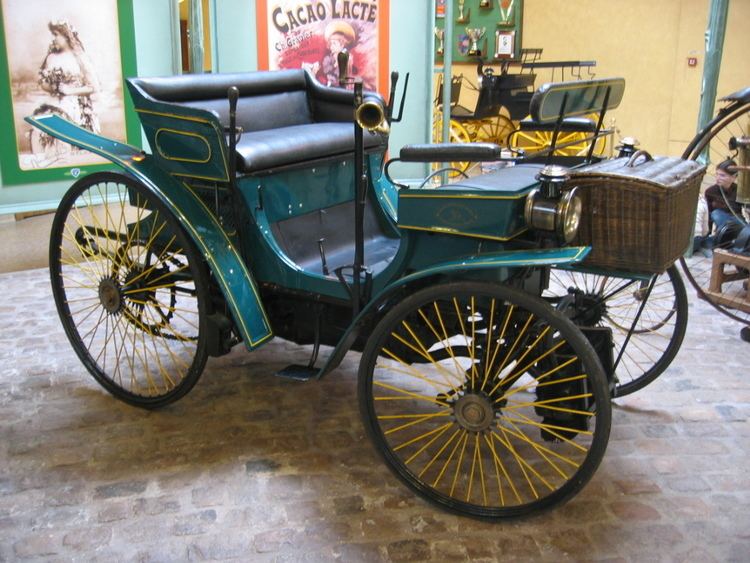Production 1891-1894
64 produced Body style Runabout | Designer Armand Peugeot Layout RR layout | |
 | ||
Manufacturer S. A. des Automobiles Peugeot Engine 565 cc V-twin
2 hp @ 1000 rpm | ||
The Peugeot Type 3 was an early French automobile; it was Peugeot's first model to be mass-produced. It was their first car with an internal combustion engine.
Contents
Background
The earliest Peugeot models from 1889 were steam-powered tricycles, built in collaboration with Léon Serpollet. In 1890, Peugeot met with car technology innovators, Gottlieb Daimler, and Émile Levassor and became convinced that reliable and practical vehicles would have to be powered by petrol and have four wheels. The Type 2 was the first such model. Peugeot's one-time partner, Serpollet, continued with steam technology under the brand name Gardner-Serpollet until Serpollet's death in 1907.
Performance
The engine was a German design by Daimler but was licensed for production in France and then sold to Peugeot. It was a 16° V-twin and produced 2 bhp, sufficient for a top speed of approximately 18 kilometres per hour (11 mph).
World record
Armand Peugeot decided to show the quality of the Type 3 by running it alongside the cyclists in the inaugural Paris–Brest–Paris cycle race, thus gaining official confirmation of progress frem the race marshals and time-keepers. His Chief Engineer Louis Rigoulot and rising workshop foreman Auguste Doriot demonstrated the robustness of the design, as the Quadricycle operated for 1471 kilometers (914.03 miles) without major malfunctions, the longest to that time by a petrol-powered vehicle and about three times further than the previous record set by Leon Serpollet from Paris to Lyon.
It later became the first Peugeot sold to the people. A lightened Type 3 was entered into the Paris–Bordeaux–Paris race, finishing second and maintaining an average speed of 21.7 kilometres per hour (13.5 mph).
